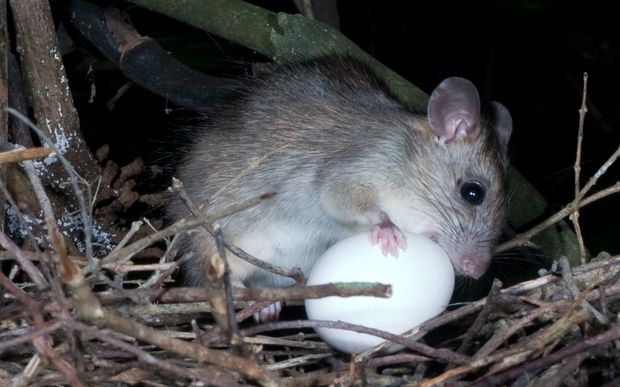In this post I want to discuss a problem that many bird species have to face: introduced predators.
What do I mean by introduced predators? An introduced predator is an animal that was introduced to a habitat by humans that it otherwise would not have been able to reach. It then begins to hunt the native species, and because the native species are not evolved to defend themselves against this predator, their numbers begin to drop. An example of a common introduced predator that has affected many birds that live in island habitats is the rat. Rats have been introduced onto many islands eating the eggs and young of the birds there. This has been a big problem for many species of birds including a bird called the Wedge-Tailed Shearwater. A colony of these birds was being attacked by introduced rats on the island of Moku‘auia on of the islands in Hawaii. Scientists responded by starting a project to exterminate all of the rats. Here are the results :
Preeradication monitoring recorded high rat activity over much of the island, with rats detected in 80% of the tracking tunnels on 14 November 2011… Rat capture rate in snap traps and take of bait from stations were high at first but declined rapidly (Figure 3). The number of rats trapped fell to zero on 28 November, after 14 days. (Marie et. al. 550)
This was a great example of a successful project to help birds like the Wedge-Tailed Shearwater. There are many other dangers that birds face like habitat loss and poaching. These are things that we must overcome because what birds provide for the environment and society are too important to be overlooked.

Ballance, Alison. “Predator Free NZ – Ambitious and Under-Funded.” Our Changing World, RNZ, July 28, 2016, https://www.radionz.co.nz/national/programmes/ourchangingworld/audio/201809596/predator-free-nz-ambitious-and-under-funded. 3/13/19.
Another issue I want to touch on is deforestation.
Deforestation is a great threat to birds and the world in general. Many birds have become endangered because of deforestation. The clearing of trees to make room for farmland and the expansion of cities has devastated many magnificent places and has made many birds extinct or close to it. Humanity needs to conserve the habitats of our natural world because the things that the animals and plants provide for us are invaluable resources that cannot be replaced. As it is said by Dorresteijn et. al. :
Human-induced landscape change poses a major threat to global biodiversity [1,2]. Forest species face the dual threat of deforestation and intensification of forest management. Woodpeckers are especially sensitive to these changes because they require large home ranges and depend on large trees for nesting and dead wood for foraging [3]. (1).